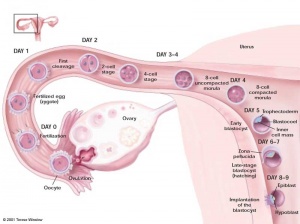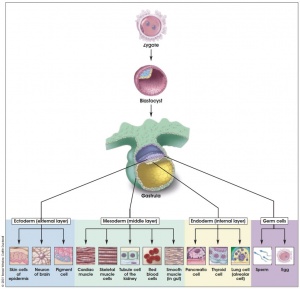Lecture - Stem Cells
Introduction
Embryology is all about stem cells, a single cell (zygote) divides and differentiates to form all the tissues throughout the body. Furthermore within some tissues, stem cells remain to continuously replace cells that are lost through the life of that tissue. In recent years scientific and general interest in this topic has increased due to the many issues that surround this specialised cell type. This lecture will introduce the various types/sources of stem cells as well as their practical and therapeutic potentials. A brief discussion of the pros and cons of different types of stem cells currently investigated in the field of medical research will be discussed.
Here are the slides for today's lecture 2018 - Stem cell biology and technology.
Objectives
- Tissue development and regeneration Stem cell biology
- Stem cell niches
- Stem cell regulation
- Stem cells and cancer Regenerative medicine
- Stem cell sources
- Future of regenerative medicine
Additional Lecture Resources
| References | |
|---|---|
| Hill, M.A. (2020). UNSW Embryology (20th ed.) Retrieved April 28, 2024, from https://embryology.med.unsw.edu.au | |
| The Nobel Prize in Physiology or Medicine 2012 | Awarded jointly to Sir John B. Gurdon and Shinya Yamanaka "for the discovery that mature cells can be reprogrammed to become pluripotent"
|
| Stem Cell Therapies | Opportunities for Ensuring the Quality and Safety of Clinical Offerings: Summary of a Joint Workshop.
Board on Health Sciences Policy; Board on Life Sciences; Division on Earth and Life Studies; Institute of Medicine; National Academy of Sciences. Washington (DC): National Academies Press (US); 2014 Jun 18. http://www.ncbi.nlm.nih.gov/books/NBK223197 |
| NIH Report | NIH - Regenerative Medicine 2006 |


